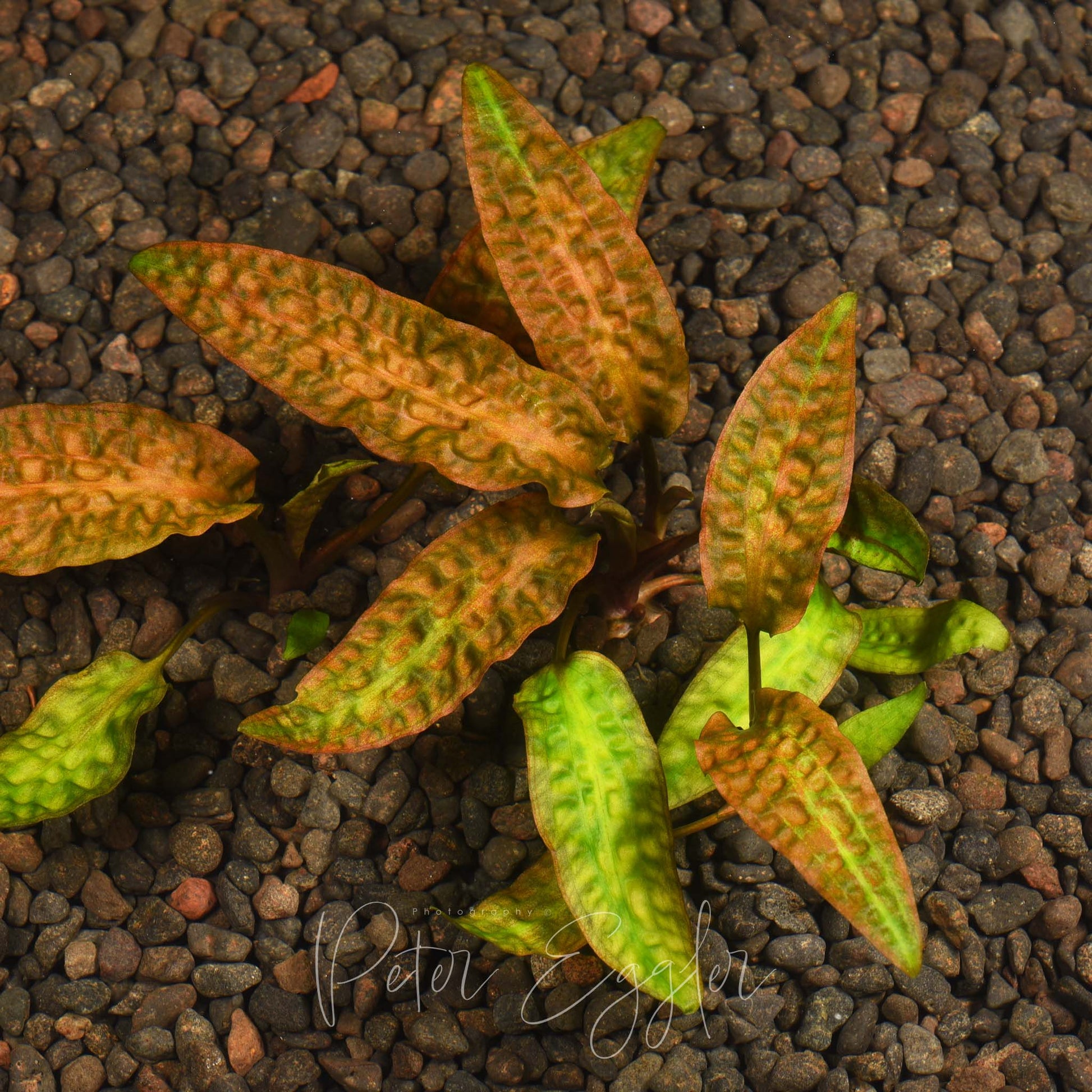Cryptocoryne [hudoroi]
Cryptocoryne [hudoroi]
Low stock: 1 left
Plant Size/Portion Size:
Plant Size/Portion Size:
Couldn't load pickup availability
Plant Name: Cryptocoryne [hudoroi]
Tankquility Catalogue #: TQ-01388
Synonyms/Trade Names:
Original Plant Sourced as: Cryptocoryne hudoroi
Plant Family: Araceae
Plant Native to1: Borneo (Kalimantan) (the crypts pages - http://www.cryptocoryneworld.org/index.php)
Plant Type: Semiaquatic
Image Details2:
Image 1: Cryptocoryne [hudoroi] grown submerse in a greenhouse pond. High light levels keep the plant low and produce deep bronze colouration of the leaves.
General Information and Cultivation3: A medium-size crypt, easy to cultivate submerse. Under low/moderate light intensity, the plant produces medium-size upright green, highly bullate leaves. With increased lighting, the plant will be lower-growing, and the leaves take on a deep bronze colouration. Though originating from limestone areas, Cryptocoryne [hudoroi] is adaptable to water (soft to hard) and substrate (slightly acid to alkaline) conditions.
Growing this crypt emerse is possible under high humidity/misting and low to moderate light intensity. It will remain small in stature.
Identification Notes: Tankquility has been unsuccessful in flowering this clone since it was received in early 2018. Though it does appear to belong to the species Cryptocoryne hudoroi, we await an inflorescence to confirm identification. Until then, the species name will be enclosed in square brackets.
Ease of Care: Easy
Plant Size/Portion Size:
Submerse grown plant: Medium-size plant with strong root development.
Further Reading:
Idei, T. (2006). The habitat of Cryptocoryne hudoroi Bogner & Jacobsen. Aqua Planta 31 (4): 141, 151- 161.
1 Distribution is taken from Plants of the World Online (https://powo.science.kew.org/) unless stated otherwise.
2 All images used on the Tankquility website have been taken of plants growing in our nursery.
3 The general and cultural information provided is based on our own experience and observation. If we supply information from others, we have acknowledged the source.
SKU:
View full details![Cryptocoryne [hudoroi]](http://tankquility.com.au/cdn/shop/products/PE1_3951CryptocorynehudoroiWM50.jpg?v=1678170692&width=1445)
-
Plants can alter their appearance due to seasonal influence, or in response to different environmental conditions or stage of maturity. This phenomenon is known as phenotypic plasticity, and it is especially evident in Aquatic/Semiaquatic plants. Whilst we endeavour to portray a plant accurately, the plant you receive may have been growing under different conditions or be at a different stage of maturity to the one in the image(s) provided.
How we package your plants...
-
Aquatic/Semiaquatic plants will be shipped bare-rooted and wrapped in damp paper for protection when required.
-
Terrestrial/Epiphytic plants will be shipped bare-rooted and the roots wrapped in damp sphagnum moss for protection when required.

